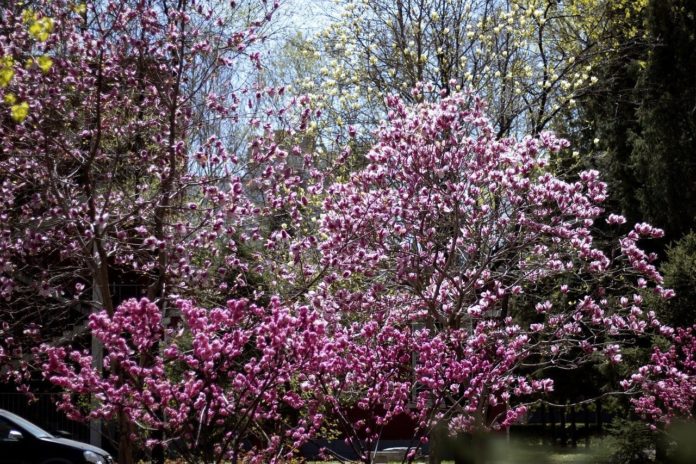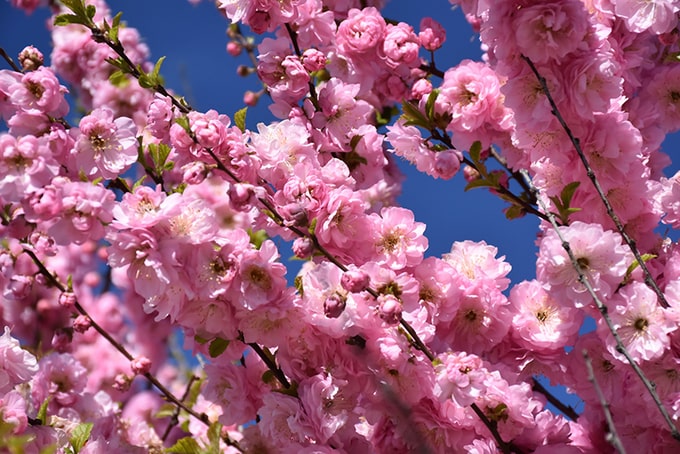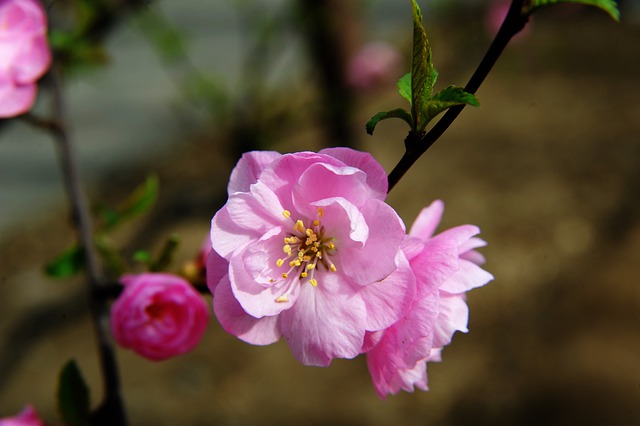This guide is meant to teach you how to propagate Double Flowering Plum (Prunus triloba ‘multiplex) and hopefully make it easier for you to sell them at your own nursery.

Hardiness Zone: 2-7

Soil Type: Well-drained sand, clay, loam

Water: Average. Fair Drought Resistance

Exposure: Full Sun
Double Flowering Plum (Prunus triloba ‘multiplex) is a vibrant zone 2 perennial shrub with a high capability for suckering. Which means it will naturally send out many underground roots from which new plants will grow from.
This beautiful plant is a great choice for landscaping, the showy pink flowers bloom in late spring.
Wildlife value
Double flowering plum’s numerous flowers attracts all sorts of pollinators like butterflies. When the plant does produce fruits (it may not be every year), it will attract many birds that will feast on them.
Best Way to Propagate Double Flowering Plum
Division
Double flowering plum (prunus triloba ‘multiplex) is a suckering plant, which means it’s easy to get established plants with roots. All you have to do is to dig out the nearby clonal plants and separate them from the rhizome.
When you dig around the clonal plant, you will see a big root coming from the mother plant to your clone. That part is the rhizome, look around it to see if roots are going down from it. This step is important because when you separate the plant, extra roots will come in handy.
Rhizomes are full of nutrients and energy, cutting just enough will ensure your new flowering plum has plenty of power to continue forming roots.
Once you’ve got your new plant, prune much of the leaves off the stem to help it retain moisture and focus on root growth.

Cuttings
Another great method to propagate double-flowering plum is by taking hardwood or softwood cuttings, depending on your time of the year.
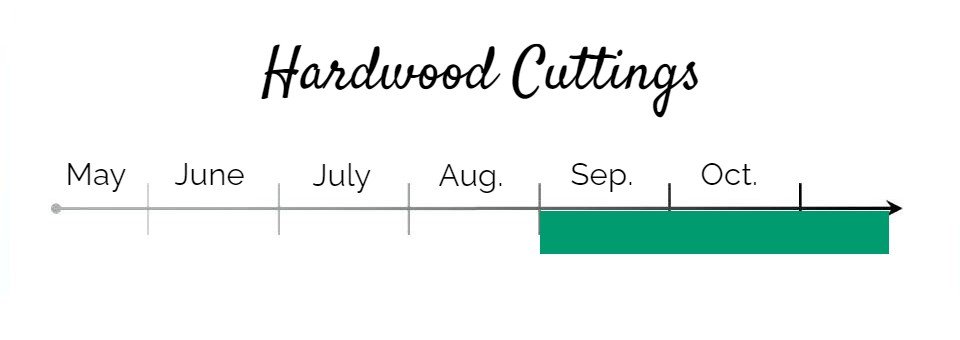
When harvesting hardwood cuttings, you want to take them early fall just before the plant goes into dormancy.
- Take some hardwood cuttings off the main stem, at about 12 inches long each.
- Make sure the width of the cutting is about pencil width.
- Scrape the bark off the bottom inch of the cutting, especially at the wooden joint.
- Remove most of the leaves off the twig and leave some at the top
- Dip in rooting hormones and then push them into your sandy propagation beds.
- Keep watering the cuttings, sand shouldn’t be too wet but it should stay moist.
- Roots will form within 6-8 weeks, let the snow fall on top during winter, snow isolates very well.
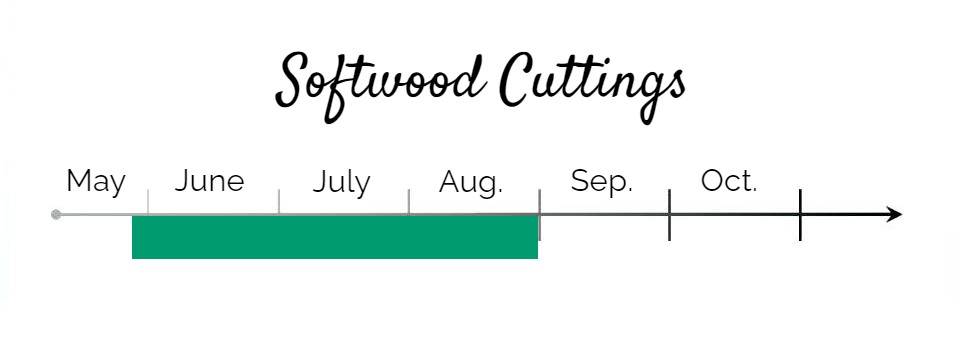
With softwood cuttings, the best time to get them is when the plant is most active, starting from late May to August.
For flowering plum, softwood cuttings propagation is pretty similar to hardwood cuttings.
Snip the cuttings at about 5 to 6 inches long, dip the end in rooting hormone and place into propagation bed.
Softwood cuttings have a higher success rate and root faster. Under perfect conditions, they’ll be rooted and ready to transplant within 3-4 weeks.
How to Prepare Double Flowering Plum For Sale
- If you’ve taken clonal plants, you can put them into pots with soil already.
- When your rooted cuttings are ready, transplant them into 6 inch square pots.
Place your pots in a sunny area of your nursery and keep them well watered all summer long. Additionally, keep an eye on them to make sure your potting medium drains well.
Pruning
The most beautiful double flowering plums I’ve seen are miniature tree shape, kind of like a bonsai.
The best time for you to prune them is when their branches are clearly visible. Take a close look at the main trunk and the biggest branches growing from it. You want to cut the branches that are too low or going in the wrong direction.
Let some major branches do their thing, they need enough room to have their own breathing space. Snip the fast-growing buds from the top of the trunk, that will let your plum grow some bushy branches. Remove any inward going branches.
When pruning, visualize that you’re shaping it into a beautiful tree and you’ll do just fine.
Taking care of plants is an art, and with experience, you can make some beautiful works of art that will sell like hotcakes.
Still trying to figure out how to start your plant nursery? Check out our plant nursery guide here.

